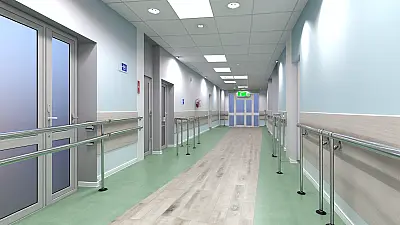PUEBLO, CO - A July 2024 state inspection at Rock Canyon Respiratory and Rehabilitation Center identified significant deficiencies in the facility's fall prevention protocols, raising concerns about resident safety measures.

Inadequate Fall Prevention Measures
State inspectors found that Rock Canyon failed to implement effective interventions to prevent falls and bruises among residents. This violation represents a fundamental breakdown in one of the most critical aspects of nursing home care, as falls are the leading cause of injury-related death among older adults.
The facility's failure to maintain proper fall prevention protocols puts vulnerable residents at unnecessary risk. Falls in nursing homes can result in serious injuries including hip fractures, head trauma, and other complications that can be life-threatening for elderly residents with existing health conditions.
Medical Significance of Fall Prevention
Effective fall prevention programs are essential components of quality nursing home care. These programs typically include comprehensive resident assessments to identify fall risk factors, environmental modifications to remove hazards, appropriate use of assistive devices, and staff training on mobility assistance techniques.
When facilities fail to implement proper fall prevention measures, residents face significantly increased risks of bone fractures, internal injuries, and complications that can lead to prolonged hospitalization or death. For elderly residents with conditions such as osteoporosis or mobility impairments, even minor falls can result in serious medical consequences.
Industry Standards and Required Protocols
Federal regulations require nursing homes to assess each resident's fall risk and develop individualized care plans that include specific interventions to minimize those risks. These interventions may include:
- Regular monitoring of high-risk residents - Environmental safety assessments and modifications - Proper use of bed alarms and mobility aids - Staff training on safe transfer techniques - Medication reviews to identify drugs that may increase fall risk
The facility should have conducted thorough assessments of each resident's mobility status, cognitive function, medication effects, and environmental factors that could contribute to falls. Based on these assessments, individualized care plans should have included specific fall prevention strategies tailored to each resident's unique risk factors.
Impact on Resident Care Quality
The documented failure in fall prevention protocols indicates broader concerns about the facility's commitment to resident safety and quality care standards. When nursing homes do not prioritize fall prevention, they fail to meet their fundamental obligation to provide a safe environment for vulnerable residents.
Proper fall prevention requires coordination between nursing staff, physical therapists, and other healthcare professionals to ensure comprehensive care planning. The breakdown in these systems suggests potential issues with staff training, communication, and quality oversight procedures.
Regulatory Oversight and Accountability
This violation occurred during a complaint-driven inspection, indicating that concerns about resident safety may have prompted the state investigation. Complaint inspections typically focus on specific issues that have been reported to regulatory authorities, suggesting that fall prevention problems may have directly impacted residents or their families.
The citation under federal tag F689 specifically addresses the facility's obligation to prevent accidents and maintain resident safety. This regulation requires nursing homes to ensure that residents receive proper care and services to prevent falls and related injuries.
State inspectors will likely require the facility to develop and implement corrective action plans to address the identified deficiencies in fall prevention protocols and demonstrate ongoing compliance with federal safety standards.
Full Inspection Report
The details above represent a summary of key findings. View the complete inspection report for Rock Canyon Respiratory and Rehabilitation Center from 2024-07-12 including all violations, facility responses, and corrective action plans.
💬 Join the Discussion
Comments are moderated. Please keep discussions respectful and relevant to nursing home care quality.